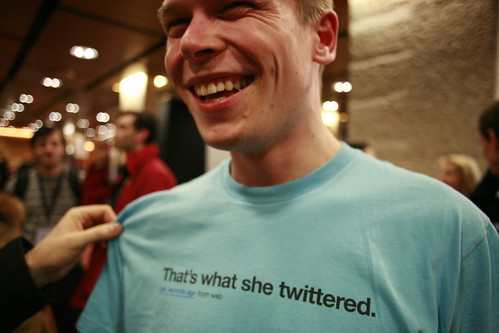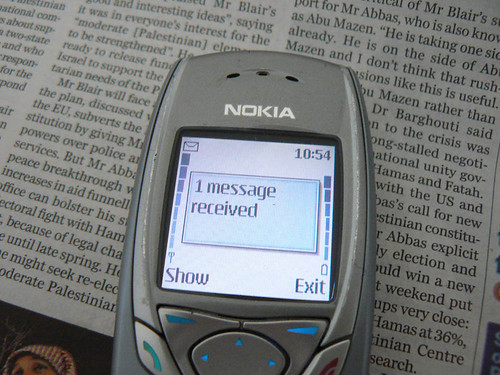A serious, actual warning: this blog post contains material that is mildly pornographic. If you are my parents or anyone who is seriously considering hiring me — with the exception of the fine editorial board over at the Adult Video News family of publications — I advise that you just click here to read my more, uh, kosher material.
End of warning.
❡❡❡
I am writing today because I am concerned — as many of you are, I imagine — that millions of American men are under the impression that Jewish youths fantasize not of Catholic schoolgirls or slightly-submissive cheerleaders but of bacon-wielding Rabbinical scholars.
Perhaps I should explain.
Where to start is a hard question 1.. When I was a kid — in the clean, wholesome 1990s — companies were in the business of using sex to sell Pepsi or Chris Rock albums instead of, well, sex.
Even when the President decided to let the other zipper drop, all the American people got were a few Slick Willy jokes. Those were simpler times.
But as Y2K closed in, something changed: doctors at Pfizer realized that their new blood pressure medication wasn’t doing what they they thought it would do. And now they needed a megaphone to tell everyone of the side effects they’d discovered. Meanwhile, the NFL needed a new sponsor; those 1-800-COLLECT ads weren’t going to survive. So if you’re looking for a moment when Americans became weirdly okay with talking about sex in public, I’d nominate Viagra’s first TV ad campaign as the tipping point.
A decade later, we’re completely unimpressed by overt displays of sexuality on television. If you watched the NFL Draft this weekend, you were probably exposed to equal amounts of Cialis advertising and draft analysis 2.. If you watched on a satellite provider, like Dish Network, you saw an additional dose of ads for something that’s called — with all irony intended — Extenze. And may I remind you: in 2004, a famous entertainer exposed herself to nearly a hundred million Americans. It is no coincidence that the incident took place at halftime of a football game.
Lately, we’ve been channeling our sex obsession towards pornography. Two weeks ago, an obituary for an adult film actress was featured on the front page of The New York Times’ website. The Washington Post ran a multi-part series about the Maryland state senate’s quest to squash a public showing of a pornographic film titled “Pirates II: Stagnetti’s Revenge.” Porn isn’t taboo anymore; it’s actually headline news.
Even today’s sex advertisers are evolving with these social changes. They’ve actually started to — and I cannot believe I am typing this — microtarget to consumers.
Microtargeting is a technique that only slightly predates Viagra. Give much of the credit to Mark J. Penn — a political consultant for the Clintons, among others — who coined the term “soccer moms.” He started a movement among political-types in which society is fragmented until you’re left with only homogeneous groups of people. Those people — soccer moms, NASCAR dads, Rednecks for Obama, or whomever — are then sent as many political mailings as the USPS will legally allow.
Then there’s another side of microtargeting: localization. Specific advertisers — say, supermarkets — want to be able to advertise to the people who live within a few miles of their store. So they’ll mictrotarget their ads only to those consumers. It’s easy to figure out who those consumers are, too: your Internet IP address is basically a Lo-Jack for your computer.
What’s frightening about today’s sex advertisers is that they’re microtargeting to both specific demographics and local markets; they’re actually customizing their smutty ads to your liking and locale.
On a theoretical level, microtargeting makes sense. If you can gather information about an Internet user — Dan, age 21, Jewish, enjoys baked goods — and can pinpoint his location — Columbia, Mo. — then you can deliver an ad that cuts directly to what I like and where I can buy some of it.
But this really only works well if you’re looking to get me a good deal on hamantaschen in mid-Missouri. It does not work as well when you’re trying to sell sex.
Which, finally, brings me back to the matter at hand: a disturbing new series of Internet advertorials that have brought together Jimmy Dean breakfast meats and shiksas in a way I never thought was possible.
(N.B.: The following screenshots have been reproduced directly. With the PG-aged in mind, I have edited in leavened distractions to block any unsightly parts of the photo. Other images have been slightly Photoshopped to blur out 3. what matzah could not.)
The advertisement features a number of slides that progress every few seconds. I’ll start with the first slide:

Initial thought: what’s with the fake beards? And I don’t even want to guess what they’re trying to sell. To the next slide:

First things first: I belong to a synagogue in Washington, D.C., that’s lucky enough to have not one but two excellent female rabbis. So I’m not entirely sure what this ad is getting at by asking “if.” But to answer the question at hand: no, even as a young Jewish man, no, I have not had that fantasy.
Also noteworthy: I still have no idea what’s being sold here. Next slide:

Now’s the point where I start to really wonder how customized this ad is for me. I mean, ass-slapping? With pork products? And it’s not like the Google search that led me to this ad was “Lesbian rabbis AND ass-slapping AND the other white meat.”
And I’m completely clueless as to what’s being sold here. From what I can gather, it appears that Johnsonville may have finally gotten into the kosher breakfast meat/sex toy industry 4.. Still, there’s no way I’m clicking away now. To the final slide:

Now here’s where microtargeting can go really wrong. Sure, I suppose that there’s enough Jewish stuff about me on the web to figure out that I like Tu Bishvat as much as the next guy. Yeah, I’ve written one blog post too many about matzah, I suppose. And I’ve managed to slide a Shabbat mention into my work before.
But there are ZERO Jewish women in Columbia, Mo. Trust me: I’ve been looking for them. And now some smut advertisement is telling me that there’s a cult of slutty, Rabbinically-dressing girls 5. somewhere in this town?
I’ll believe that the day someone convinces me that Catholics guilt their children better.
Now, the ads turned out to be for a website that’s kind of a Match/eHarmony/J-Date-gone-smutty. I wasn’t previously aware that such a service existed. I suppose it would make for an unusual answer to the “So, how’d you meet?” question at the wedding, though.
Regardless, there is a lesson here for advertisers: be careful with microtargeting. You can’t always be sure that you’re actually reaching your target audience. Personally speaking, I prefer pastrami to ham.
And another thing: are there really that many Jewish-taboo-breaking-ham-lovers to even warrant such a targeted ad?
I’l leave you with a final thought: this ad could’ve taken a page from the 1990s. This decade, we’ve been using sex to sell sex. I think that’s the wrong tack.
Sex sells others things pretty well. Had I been shown the above ad — and then been asked to click through to buy a honey-baked ham — I think I just might have considered.
❡❡❡
1.) Yes, that’s what she said. And if you get bored of that, add the words “in bed” to the end of a sentence. That also works well with fortune cookies. >back to article
2.). Why it seems like a good idea to mix Mel Kiper, Jr., with subliminal sex advertising doesn’t fully make sense to me. His mustache must have something to do with it. >back to article
3.) I do not think it is a coincidence that when blurring out the less suitable parts of these photos, I used a Photoshop tool that measures the strength of the blur in something called “hardness.” Hey, it wasn’t my idea. >back to article
4.) And if there ever was a company to get into the breakfast meat/sex toy industry, you’d want it to be named Johnsonville. >back to article
5.) Also: I really cannot imagine how the company solicited actors for this ad. “Wanted: 36-24-36 non-vegan for photo shoot. Experience working with large, salted meats preferred.” >back to article















